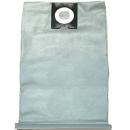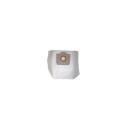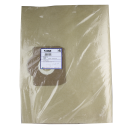accessories for bodywork hoovers

Body accessories for central vacuum units
-
 9500.3602Power station bag9500
9500.3602Power station bag9500 -
 SAE30Central accessories
SAE30Central accessories -
 SAE31Pack of 10 paper bagsfor SA370-SA375-SA377 series
SAE31Pack of 10 paper bagsfor SA370-SA375-SA377 series
︾
Accessories for bodywork central vacuum systems:
Central vacuum bags are an essential part of the central vacuum systems used in bodyshops. These bags play a crucial role in capturing dust particles, paint residues and other debris, helping to maintain a clean working environment and extend the life of the central vacuum system. Here are some important points to know about central vacuum bags in the context of auto body work:
Particle filtration :
Central vacuum bags are specially designed to filter out fine particles generated during bodywork, such as Sanding dust, paint residues and other contaminants. This ensures optimum air quality in the workshop, reducing health risks for workers and preventing contamination of surfaces and paints.
Compatibility with the central vacuum unit:
It is essential to choose bags designed specifically for the model of central vacuum unit used in the workshop. The bags must be compatible with the equipment specifications to ensure correct installation and effective filtration.
Quality materials :
Central vacuum bags are made from high quality materials that offer optimum filtration while ensuring maximum durability.
Debris holding capacity:
The bags are designed to retain a significant amount of debris before requiring replacement. Retention capacity varies according to bag size and specific model.
Ease of installation and replacement:
Central vacuum bags are generally designed to be easy to install and replace. It is important to follow the manufacturer's instructions to ensure correct installation and optimum performance.
Regular monitoring :
Users should regularly monitor the condition of the bags for signs of wear or saturation. Periodic replacement of bags is essential to maintain effective suction.
Contribution to the durability of the vacuum unit:
By effectively filtering particles, the bags help to keep the internal components of the vacuum unit clean. This can extend the life of the equipment and minimise maintenance costs.
In short, vacuum bags are key components in managing air quality and cleanliness in bodyshops. Choose bags that are compatible with your central vacuum system, make sure you maintain them regularly, and replace them according to the manufacturer's recommendations to ensure optimum performance.
Positioning the central vacuum bag :
Correctly positioning the bag for a central vacuum cleaner is crucial to ensuring optimum particle filtration and maintaining the equipment's performance. Here are some tips on how to position the bag correctly in a central vacuum:
Selecting the right bag :
Before you even begin installation, make sure you use a bag specifically designed for your central vacuum model. Check compatibility by consulting the central vacuum manufacturer's specifications.
Switching off the central vacuum unit :
Before installing or replacing the bag, make sure that the central vacuum unit is completely switched off. This will prevent any risk of injury and ensure safe handling.
Access to the bag compartment :
Open the bag compartment in the central vacuum unit. This compartment is usually accessible via a cover or a hatch provided for this purpose.
Observe the installation markings :
Some bags are equipped with markings or indications to show the correct installation orientation. These markings may include arrows or marks indicating the direction in which the bag should be positioned.
Installing the bag with care:
Gently insert the bag into the compartment, following the markings if available. Make sure that the bag is correctly positioned and that there are no creases or deformations that could impede air circulation.
Adjusting fasteners :
If your central vacuum cleaner uses fasteners, clips or other fixing mechanisms to hold the bag in place, make sure they are correctly adjusted. This will prevent the bag from moving or coming loose during operation.
Closing the compartment :
Once the bag is correctly positioned, carefully close the compartment, ensuring that it is properly sealed. Make sure the lid or hatch is securely fastened to prevent any unfiltered air from escaping.
Visual check:
Do a visual check after closing the compartment to make sure everything is in order. Make sure that the bag is not blocked by any obstacles, and that all the fasteners are correctly in place.
Restarting the central vacuum unit :
Once the bag is correctly positioned and the compartment closed, you can restart the central vacuum unit. Check that the suction functions normally.
Regular replacement:
Plan regular bag replacement in line with the manufacturer's recommendations and workshop usage. Preventive replacement will help maintain effective filtration.
By following these steps, you will optimise the positioning of the bag in your central vacuum unit, ensuring effective filtration and contributing to the durability of the equipment.